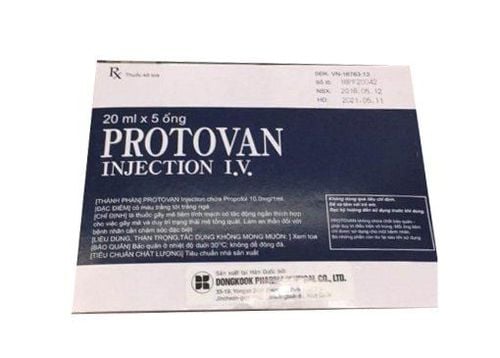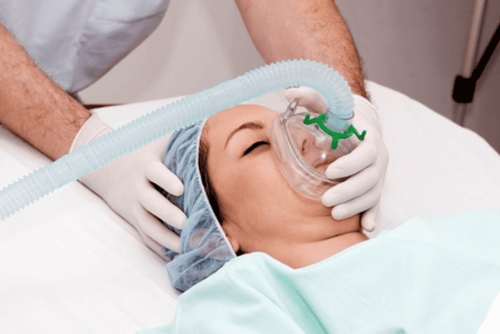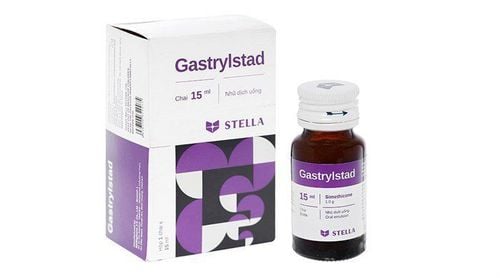This is an automatically translated article.
Xylocaine has the main ingredient Lidocaine hydrochloride, which is commonly used in cases of local surface anesthesia. Learn the necessary information about the composition, indications, contraindications, dosage and side effects of Xylocaine to bring patients and their family the best treatment effect.
1. What is Xylocaine?
Xylocaine drug is prepared in the form of topical gel, with the main ingredients including:
Active ingredient: Lidocaine (anhydrous Lidocaine hydrochloride form) 2% (corresponding to 20 mg of active ingredient in 1 g of drug mixture). Excipients: Hydroxypropyl methylcellulose, Hydrochloric acid, Sodium hydroxide, Propyl parahydroxybenzoate, Methyl parahydroxybenzoate and distilled water just enough for 1 tube of 30 g. Mechanism of action:
The active ingredient Lidocaine hydrochloride in Xylocaine belongs to the group of local anesthetics Amide, which acts as a local anesthetic by blocking the influx of sodium ions into the nerve cell membrane, thereby blocking the rebound. Restores impulse conduction along nerve fibers.
Xylocaine drug has a complete and rapid mucosal anesthetic effect within 5 minutes depending on the area of use of the drug, and this active ingredient also has a lubricating effect to reduce friction. In addition, the mixture of Lidocaine and excipients creates high viscosity and low surface tension, thereby helping the drug to contact the skin tissue for a long time, providing an anesthetic effect lasting about 20-30 minutes.
2. What does Xylocaine do?
Xylocaine is used to numb and lubricate the internal surfaces:
Catheter, catheter exploration, cystoscopy and other procedures in the urethra in men and women. Gastroscopy and bronchoscopy or other procedures in the nasal cavity and pharynx. Rectal endoscopy. Endotracheal intubation. Relieve pain caused by cystitis or urethritis. Pain relief after circumcision.
3. Contraindications of Xylocaine
Contraindicated to use Xylocaine in case the patient has:
History of hypersensitivity to any component of Xylocaine. History of allergy to antibiotics containing lidocaine hydrochloride. History of allergy to local anesthetics of the amide group. History of allergy to ester local anesthetics or to PABA metabolites.
4. Dosage and how to use Xylocaine
4.1. How to use The anesthetic effect of Xylocaine usually occurs within 5 minutes depending on the area where the drug is used and can last about 20 - 30 minutes. Use appropriate doses, correct technique, and caution to ensure the safety and efficacy of Xylocaine. 4.2. Dosage 4.2.1. Adults or children ≥ 12 years of age Urethral anesthesia and analgesia:
Adult males:
Inject 20 ml (400mg Lidocaine) slowly into the urethra until the patient feels a full stretch or is half pumped. ampoule (10ml). Clamp the rim of the penis for a few minutes. Inject the remaining dose (10ml). Wait about 10 minutes before inserting the tool. A dose of 30-40 ml (600-800 mg) can be used in divided doses of 3-4 pumps. Adult women:
Inject 5-10ml (100-200mg Lidocaine) slowly into the urethra. Divide the medicine into small doses to pump and fill the urethra. Wait a few minutes before inserting the tool. Gastroscopy or bronchoscopy:
Inject 10 - 20 ml (200 - 400 mg of Lidocaine) drug into the esophageal or bronchial tubes. A small amount of topical medication may be incorporated on the endoscope. The maximum total dose should not exceed 20 ml (400 mg Lidocaine). Anorectal endoscopy:
Inject 20 ml (200 – 400 mg of Lidocaine) drug into the anorectal canal. A small amount of topical medication may be incorporated on the endoscope. The maximum total dose should not exceed 20 ml (400 mg Lidocaine). Intubation:
Apply 2 ml (40 mg of Lidocaine) to the endotracheal tube surface before intubation. Avoid getting the medicine into the tube.
5. Precautions when using Xylocaine
5.1 Side effects encountered when using Xylocaine Using Xylocaine in high doses or for a long time, can cause side effects such as:
Local reactions: Sore throat. Hypersensitivity, severe allergies can lead to anaphylaxis. Systemic toxicity : Central nervous system: Numbness of the tongue, vertigo, loss of sensation around the mouth, increased hearing, tinnitus, visual disturbances, muscle tremors, convulsions, loss of consciousness, seizures and asphyxia . Cardiovascular system, circulatory: Severe hypotension, arrhythmia, bradycardia and cardiovascular collapse. Patients should stop using Xylocaine immediately after discovering the above unwanted side effects or any other unusual symptoms. Patients and people should notify the treating doctor or immediately go to the nearest medical examination and treatment facility for timely treatment.
5.2 Notes on the use of Xylocaine in subjects Be careful when using Xylocaine in people with mucosal lesions or infections in the mucosal area intended to use the drug. Xylocaine should be used with caution in the elderly, people with poor general health, people with partial or complete conduction block, Porphyrin metabolism disorders and severe renal impairment. Using Xylocaine by mouth and throat may interfere with swallowing, increase the risk of aspiration, or may increase the risk of bite injury because the drug numbs the tongue and oral mucosa. Avoid placing Xylocaine in the lumen of the endotracheal tube because it can accumulate in the oral passages, narrowing the diameter of the endotracheal tube and obstructing ventilation. Pregnant women: According to the US Food and Drug Administration (FDA) classification of active ingredients Lidocaine in group B, group with no or little evidence of risk on pregnancy. Therefore, caution should be exercised when using Xylocaine in this patient. Lactation: The active ingredient Lidocaine in Xylocaine can pass through breast milk, but in small amounts, it is unlikely to have harmful effects on the infant. Drivers or machine operators may experience symptoms such as a temporary decrease in motor coordination or neurological dysfunction.
6. Xylocaine drug interactions
Use of Xylocaine with other local anesthetics may increase the toxicity of each other. Cimetidine and Beta-blockers reduce the clearance of Xylocaine. Xylocaine and class III antiarrhythmic drugs such as Amiodarone should be used with caution because of the increased risk of adverse cardiovascular effects. Above is basic information about Xylocaine's ingredients, uses, dosage and precautions when using Xylocaine. To achieve the most effective treatment when using Xylocaine, patients and family members need to consult the instructions of a doctor or pharmacist.
Please dial HOTLINE for more information or register for an appointment HERE. Download MyVinmec app to make appointments faster and to manage your bookings easily.













